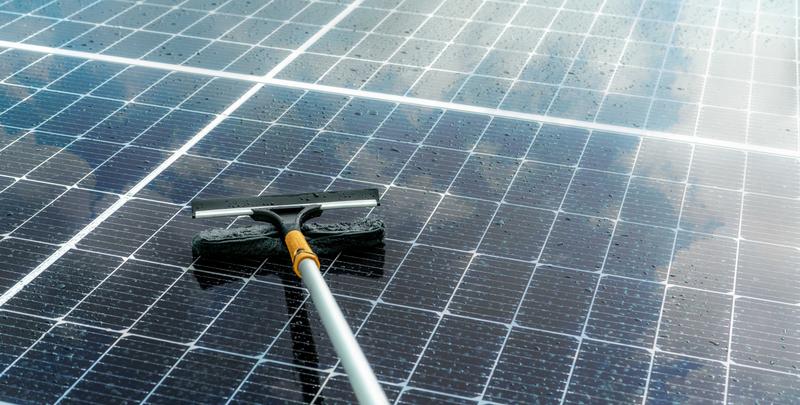
Should you’re attempting to find a significant-general performance
Why Solar Panel Cleaning Matters
Photo voltaic panels seize Vitality at their most effective when clean up. Dust, pollen, chicken droppings, and smog minimize performance—sometimes by twenty% or more. Regular cleansing aids sustain best performance, increase panel everyday living, and guard your investment.
Primary Added benefits:
- Enhanced energy output
- Reduce electrical energy charges
- Extended panel lifespan
- Diminished possibility of micro‑cracks on account of thermal hotspots
Sorts of Solar Cleansing Tools
Choosing the ideal Resource is determined by your set up, drinking water availability, and wished-for convenience. Categories consist of:
- H2o‑driven photo voltaic brush programs
- Portable photo voltaic panel cleansing kit bundles
- Pure h2o cleaning units
- Rotary solar brushes and extension poles
Drinking water Powered Photo voltaic Brush Techniques
These brushes hook up with a water supply and spin whilst dispensing h2o, combining cleaning and lubrication in one step. The result: spotless panels without scratching.
Vital Characteristics:
- Built-in h2o feed with the brush head
- Tender bristles Secure for glass surfaces
- Rotary motion lowers guide hard work
- Mounts on extension poles for rooftop accessibility
Moveable Photo voltaic Panel Cleaning Package
A complete
- Brush head (set or rotating)
- Extension pole (adjustable lengths around 6 m)
- Hose adapters or quick‑join fittings
- Pure‑water tank or filtration program
- Delicate microfiber towels or squeegees
- Non‑abrasive cleaning Resolution (if permitted)
Advantages of All-in-One particular Kits:
- Begin cleaning with minimal setup
- Compact for storage or vacation
- Compatible with household or industrial photo voltaic arrays
Pure H2o Solar Cleansing Units
These systems purify community drinking water—removing minerals and dirt—so it won’t leave scale or streaks. Pure water empowers Specialist-grade outcomes with out chemical substances.
How It Works:
- Pretreatment filtration (sediment, carbon, ion exchange)
- Final deionization or reverse‑osmosis phase
- Filtered water circulated via brush for cleansing
- Residue‑absolutely free drying—no spots or streaks remaining at the rear of
Rotary Photo voltaic Brush & Extension Poles
For giant photo voltaic arrays or industrial use, an influence-rotating head with a telescoping extension pole would make cleansing effective and Harmless.
Positive aspects:
- A lot less physical hard work, faster coverage
- Get to roofs and ground‑mounted panels effortlessly
- Adjustable shaft lengths for varying angles
- Universal quick‑link tips for equipment
Focus on Protection & Best Methods
Cleaning photo voltaic panels includes heights and slippery surfaces—basic safety very first:
- Use non‑conductive extension poles
- Stay away from strain washers that may crack glass
- Get the job done early or late in order to avoid glare and warmth
- Put on grips and slip-resistant shoes
- Notice nearby drinking water‑use policies or limits
Step‑by‑Step Cleansing Routine
- Flip from the photo voltaic inverter or ensure system is deactivated
- Rinse panels with lower‑pressure h2o
- Make use of a brush (or solar brush kit) with drinking water feed
- Scrub Carefully in overlapping, linear passes
- Rinse totally with clean up water
- Dry with microfiber squeegee or soft towel—provided that necessary
Selecting the Proper Photo voltaic Panel Cleaning Software
Consider your set up plus your h2o obtain:
Maintenance & Care Guidelines
- Flush hose and brush after Every single use
- Keep dry, cleanse, and faraway from UV exposure
- Exchange worn brush heads—and Test bristle softness
- Inspect seals and connectors for leaks
- Change or thoroughly clean filters in pure‑drinking water techniques routinely
Eco-Friendly Cleansing Rewards
Proper cleaning prolongs solar panel efficiency and reduces Electricity waste. Making use of water by itself—without soaps or chemicals—aids protect nearby ecology and avoids runoff air pollution.
How Photo voltaic Panel Cleansing Impacts ROI
Sensible upkeep working with good quality brushes and kits retains technique performance topped up, lessening the payback time period and maximizing Electricity generate as time passes.
Value Considerations & Value
- Water‑powered photo voltaic brushes are Price tag-helpful and durable
- Pure h2o techniques have to have upfront financial investment but supply dependable, spot‑no cost cleansing
- Rotary brush kits Strengthen productivity—worth it for large installations
- Do it yourself kits save labor costs; Skilled expert services cost extra but unlock your time and efforts
Popular Takes advantage of of Photo voltaic Panel Brushes
- Household rooftops
- Industrial photo voltaic farms
- RV or mobile installations
- Photo voltaic carports
- BIPV segments (setting up‑integrated photovoltaics)
Consumer Testimonies & Use Scenarios
“This solar panel cleaning brush manufactured a visible difference inside minutes—dust gone, no streaks, and our output improved!”
“Upgrading to the h2o‑run photo voltaic brush saved several hours of scrubbing. Coupled with a pure drinking water procedure, the panels appeared new.”
FAQs About Photo voltaic Panel Cleaning
How frequently should really panels be cleaned?
Each and every 6 to 12 months, according to your local weather—a lot more usually in dusty or pollen-large regions.
Can rain clean up solar panels?
Rain assists but doesn’t eliminate Filth buildup or film layers—handbook cleaning yields improved performance.
Can I use tap h2o?
Tap drinking water may go away mineral residue. A
Can cleaning hurt panels?
Only if abrasive applications or large-tension washers are utilised. Normally use gentle bristles, lower-force, and adhere to producer pointers.
Professional Strategies for Solar Panel Proprietors
- Clear early morning or evening in order to avoid thermal strain
- Keep track of output information—if functionality drops, clear panels
- Hold panels angled—standing drinking water promotes algae growth if remaining much too extensive
- Rotate brush heads periodically to take care of even use
Conclusion: A Brush For each and every Have to have
Whether or Solar Panel Cleaning brush not you’re looking for a cost-efficient
Examine the complete line of brushes and components intended specifically for solar cleansing at